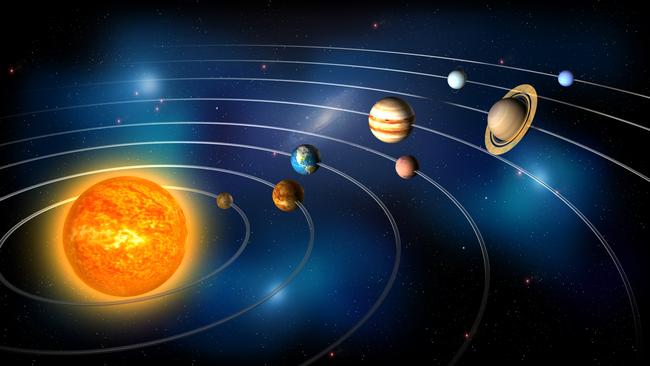New Horizons mission set to unveil Pluto’s mystery
The significance of this mission cannot be overstated. For 85 years Pluto has remained a mystery. But that’s about to change.

EIGHTY-five years ago today, a young American astronomer working at the Lowell Observatory in Flagstaff, Arizona, became an overnight scientific superstar. He had discovered the long-sought-for ‘ninth planet’.
The discoverer was Clyde Tombaugh, and the planet he found was soon named Pluto.
Astronomers had suspected there was another planet beyond Neptune, and Tombaugh’s job was to find it before anyone else did. And that’s just what he did on February 18, 1930, spotting it as a tiny dot on glass-plate sky photographs taken the previous month.
In the 85 years since, Pluto has mostly remained a mystery. But that’s about to change — on July 14 this year, the distant world will get its first visitor from planet Earth.

Back on January 19, 2006, NASA launched the New Horizons spacecraft on a mission to investigate Pluto and its moons.
The piano-sized craft has been zipping through space for almost 10 years, slowly eating up the distance to its destination.
Because it would need to travel so far in such a short time (by space mission standards), it had to be launched fast — in fact, the fastest space launch ever, with a speed leaving Earth of 58,536 kilometres per hour.
When it reaches Pluto, unfortunately New Horizons won’t be able to stop and settle in — due to the limitations of the amount of mass they could launch, mission designers were not able to fit a rocket motor with which it could slow itself down. So New Horizons is going to go sailing straight past.
But that’s okay. For several weeks leading up to the fly-by, New Horizons will give us better pictures of Pluto than we’ve ever seen, culminating on July 14 when it zooms by at a distance of just 12,500 kilometres — close enough to give us a detailed look at its surface.
It’s hard to emphasise enough how important the mission to Pluto is. We’ve never been to Pluto before and we have essentially no idea what it looks like or what’s there.
This is a once-in-a-lifetime event — the last time we got our first up-close images of a planet we’d never seen before, was Neptune back in 1989. After Pluto there will be no more for the foreseeable future.

So what do we know about Pluto?
For a start, it lives on the outskirts of the Solar System in a region known as the Kuiper Belt, where scientists have since discovered lots of other Pluto-like bodies. They’re called Kuiper Belt Objects, or KBOs.
Pluto’s orbit is an ellipse, not a circle, meaning that it’s sometimes closer to the Sun and sometimes further away — ranging from about 30 times the Earth-Sun distance to about 49 times.
At the moment it’s just under 33 times as far from the Sun as Earth is, or almost 4.9 billion kilometres.
Observations of Pluto are hard to make, because it is so far away and so small — only 2,370 kilometres in diameter. By comparison, Australia is almost 4,000 kilometres wide.
It seems to be made of a mixture of ice and rock, with a covering of 98 per cent nitrogen ice plus some frozen methane and carbon dioxide. The surface temperature is a frigid -229 degrees Celsius.
The best images we have were taken by the Hubble Space Telescope, but even these show only broad, blurry outlines of dark and light patches.
We know it has five moons. It’s largest, Charon — at 1,200 kilometres wide, slightly more than half as big as Pluto itself — was discovered in 1978.

The rest are tiny, thought to be between 10 and 60 kilometres wide — Nix and Hydra (discovered in 2005), Kerberos (2011) and Styx (2012), all found using Hubble.
All of these names are associated with the mythology of the ‘underworld’, following the example set by the naming of Pluto (who was the Roman god of the underworld).
There might be more moons, too small to see yet. If they’re there, New Horizons has a good chance of spotting them.
Pluto last made headlines in 2006 when the International Astronomical Union chose to demote it from planet status to ‘dwarf planet’. A still-contentious decision, it was based mainly on the discovery of those other bodies in the Kuiper Belt — either they would all have to be called planets, or some other definition would need to be found. Astronomers chose the latter.
Following its close fly-by, New Horizons will continue on an outward trajectory. NASA intends to retarget the craft to visit one or more of those KBOs.
Jonathan Nally has been a space writer for 30 years, and appears regularly on the Today Show on Channel 9. You can read more of his work at SpaceInfo.com.au



